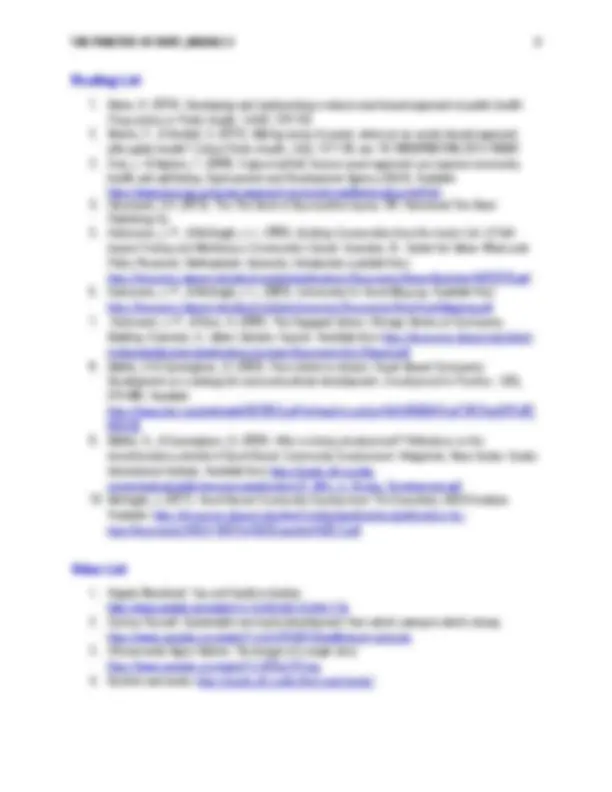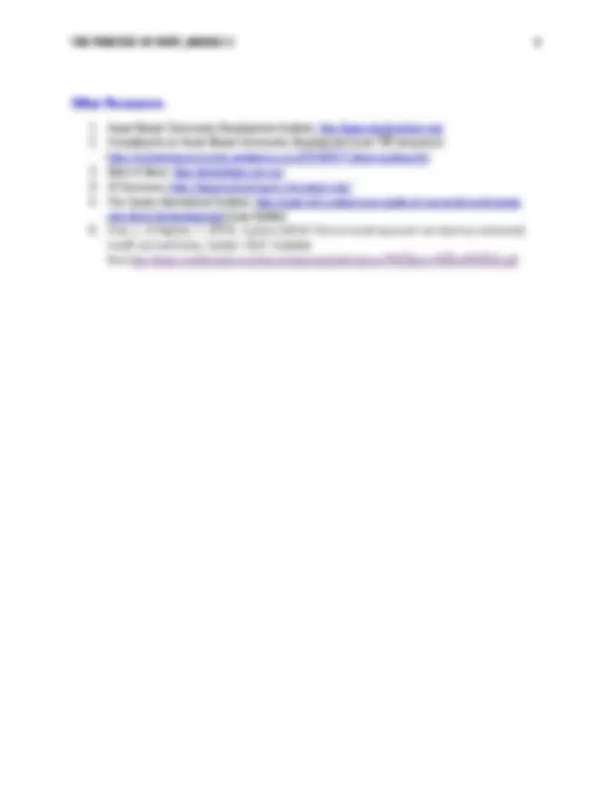




Study with the several resources on Docsity

Earn points by helping other students or get them with a premium plan


Prepare for your exams
Study with the several resources on Docsity

Earn points to download
Earn points by helping other students or get them with a premium plan
Community
Ask the community for help and clear up your study doubts
Discover the best universities in your country according to Docsity users
Free resources
Download our free guides on studying techniques, anxiety management strategies, and thesis advice from Docsity tutors
Asset-based community development (abcd), a place-based framework pioneered by john mcknight and jody kretzmann. Abcd focuses on the gifts, skills, experiences, knowledge, and passions of local community members to build more sustainable communities. The approach values community members as co-producers and citizens, rather than passive recipients of services.
Typology: Study notes
1 / 4

This page cannot be seen from the preview
Don't miss anything!



The future of every community lies in capturing the passion, imagination, and resources of its people.
- Ernesto Sirolli
ABCD is a place-based framework pioneered by John McKnight and Jody Kretzmann, founders of the ABCD Institute at Northwestern University. ABCD builds on the gifts (skills, experiences, knowledge, and passions) of local community members, the power of local associations, and the supportive functions of local institutions to build more sustainable communities for the future (McKnight, 2017).
The asset approach is a set of values and principles and a way of thinking about the world. It values the capacity, skills, knowledge, connections and potential in a community. It sees communities as co-producers of health and well-being, rather than the recipients of services. The approach of ABCD is to enhance and support the capacity of a community to make visible their assets and to support and enhance the connection of those assets. These two essential roles according to McKnight (2017) are the way to undergird productive citizenship. ABCD emerged as a critique of deficit-based approaches. The deficit approach focuses on the problems, needs and deficiencies in a community. It designs services to fill the gaps and fix the problems. As a result, a community can feel disempowered and dependent; people can become passive recipients of expensive services rather than active agents in their own and their families’ lives. Here’s a quick look at the difference between needs-based and asset-based approaches: NEEDS (what is not there)
(what is there) Services to meet needs Connections and contributions Consumers/Consumers/Clients Co-owners/ Co-producers/Citizens Programs are the answer Local people are the answer Community residents must be valued as co-producers and citizens, rather than being viewed as clients, consumers and customers. They act responsibly when they care about and support what they create. The central factor in sustainable change is local leadership and its continuous development and renewal. The starting point for change is always mindset and a positive attitude. This power gives community a sense of agency to engage and participate in their own process.
ABCD begins with the idea that in every community, something works. Instead of asking “what’s wrong, and how to fix it,” the question we should be asking is “what’s worked and how do we get more of it?” This generates energy and creativity. ABCD is not a recipe, but a place-based framework that incorporates such principles as: ▪ Meaningful and lasting community change always originates from within. ▪ The wisdom of the community always exceeds the knowledge of the community. ▪ Building and nourishing relationships is the fundamental action in community building. ▪ Communities have never been built by dwelling on their deficiencies, needs and problems. ▪ Communities respond creatively when the focus is on resources, capacities, strengths, aspirations and opportunities. The critical developmental process of ABCD involves highlighting, mapping, connecting and celebrating the diverse range of community assets. Harnessing these connected assets for action creates and strengthens inclusive communities. The strength of the community is directly proportional to the level that the diversity of its community members’ desire, and are able to contribute their abilities and assets to the well-being of their community. Every single person has capacities, abilities, gifts and ideas, and living a good life depends on whether those capacities can be used, abilities expressed, gifts given and ideas shared.
According to the ABCD Institute (www.abcdinstitute.org), here are the key stages of ABCD in practice:
AI is a process of valuing and drawing out strengths and successes in the history of a group, a community or an organization. AI is used to develop a realistic and realizable vision for the future and a commitment to take sustainable action. AI creates a positive mindset by talking about success rather than being defined by past failures. The inquiry starts with appreciating the best of what is, thinking about what might be and should be, and ends with a shared commitment to a vision and how to achieve it. It is based on a basic principle: look for successes—look for what works well and do more of it. Source: (Foot & Hopkins, 2009).